In the dynamic world of transportation and logistics, the old lowboy trailers have carved out an enduring niche. These versatile giants have been pivotal in hauling heavy machinery, oversized loads, and specialized equipment across various industries. At CarMax Vehicle, we recognize the timeless value of these robust trailers and strive to enhance their legacy with innovative designs and exceptional craftsmanship. This comprehensive guide delves deep into the intricacies of old lowboy trailers, exploring their history, design features, applications, maintenance, and the advantages they offer over modern alternatives.
Table of Contents
- Understanding Old Lowboy Trailers
- Historical Evolution of Lowboy Trailers
- Key Design Features
- Applications Across Industries
- Maintenance and Longevity
- Comparative Analysis: Old Lowboy Trailers vs. Modern Designs
- Innovations by CarMax Vehicle
- Environmental Considerations
- Future of Old Lowboy Trailers
- Conclusion
- Frequently Asked Questions
Understanding Old Lowboy Trailers
Old lowboy trailers, characterized by their low deck height, are specifically designed to transport heavy and oversized loads that cannot be accommodated by standard flatbed trailers. The low deck minimizes the overall height of the load, facilitating easier clearance under bridges, power lines, and other overhead obstacles. This unique feature makes old lowboy trailers indispensable in sectors where transporting large machinery and equipment is commonplace.

Key Advantages:
- Height Clearance: Lower deck reduces the risk of collision with overhead structures.
- Stability: Wider frame and lower center of gravity enhance load stability.
- Load Capacity: Capable of carrying hefty weights, often exceeding standard trailer limits.
Historical Evolution of Lowboy Trailers
The inception of lowboy trailers dates back to the mid-20th century, emerging as a solution to the transportation challenges posed by the industrial boom. Initially, these trailers were rudimentary, with minimal design variations and limited load capacities. However, as industries evolved, so did the demands on transportation equipment, leading to significant advancements in lowboy trailer technology.
Milestones in Development:
- 1950s: Introduction of basic low deck trailers for construction equipment.
- 1970s: Enhanced chassis designs incorporating multiple axles for increased weight distribution.
- 1990s: Incorporation of modular systems allowing for greater customization.
- 2000s: Adoption of advanced materials and safety features.

Key Design Features
The design of old lowboy trailers is meticulously crafted to meet the demanding requirements of heavy-duty transportation. Several core components contribute to their functionality and performance.
Chassis and Frame Construction
The chassis serves as the backbone of the lowboy trailer, providing structural integrity and support for heavy loads. Typically constructed from high-strength steel, the frame is engineered to withstand substantial stress and weight.
- Material: High-grade steel or alloy steel for enhanced durability.
- Design: Reinforced joints and gusset plates to distribute load evenly.
- Customization: Ability to modify frame dimensions based on specific load requirements.
Axle Configuration
Axles play a crucial role in weight distribution and trailer maneuverability. Old lowboy trailers often feature multiple axles to manage massive loads effectively.
| Axle Type | Number of Axles | Load Distribution | Benefits |
|---|---|---|---|
| Tandem Axles | 2 per section | Balanced across front and rear | Improved stability and weight management |
| Tridem Axles | 3 per section | Greater weight distribution | Higher load capacity and reduced road wear |
| Sliding Axles | Varies | Adjustable based on load | Enhanced adaptability to different load sizes |

Deck Height and Load Capacity
The hallmark of a lowboy trailer is its low deck height, which is a critical factor in transporting oversized loads.
- Deck Height: Typically ranges between 4 to 6 inches above the ground.
- Load Capacity: Can handle weights from 40,000 lbs to over 200,000 lbs, depending on configuration.
- Adjustability: Some models offer adjustable legs to accommodate varying terrain and load heights.
Applications Across Industries
Old lowboy trailers are versatile assets utilized in numerous sectors, each benefiting from their unique capabilities.
Construction and Infrastructure
In the construction industry, lowboy trailers are essential for transporting heavy machinery such as excavators, bulldozers, cranes, and generators. Their ability to handle oversized loads ensures that construction projects run smoothly without logistical hindrances.
- Equipment Transport: Safely moves large construction machinery.
- Project Efficiency: Reduces the need for multiple trips, saving time and resources.
- Site Accessibility: Low deck height facilitates entrance to construction sites with restricted overhead clearance.
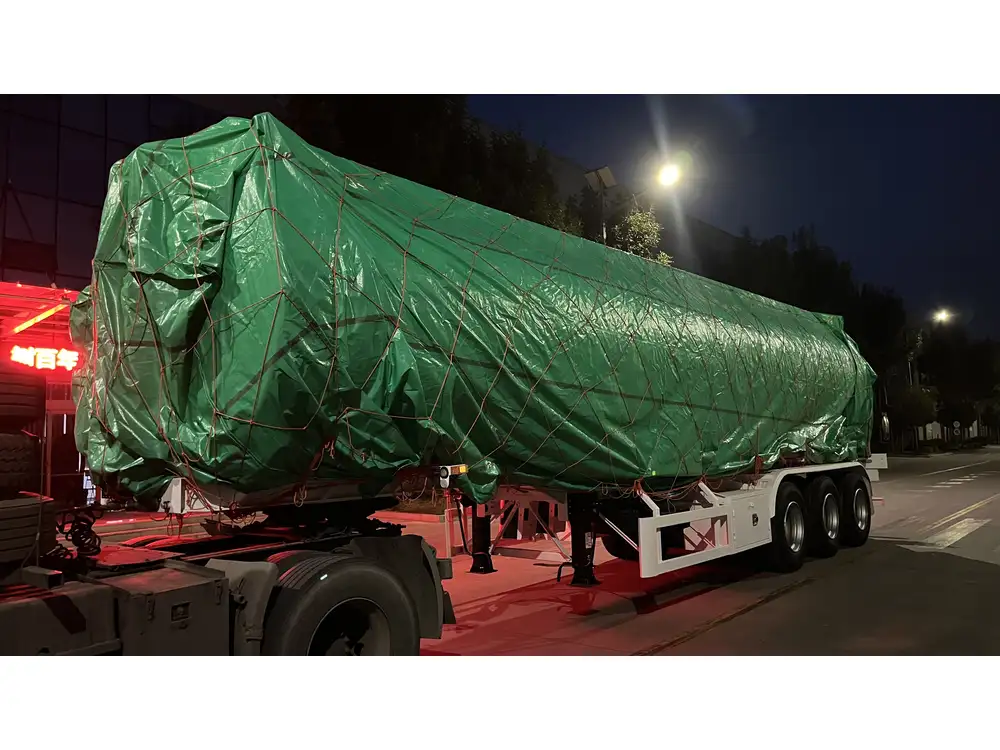
Energy Sector
The energy industry relies heavily on lowboy trailers for transporting equipment related to oil and gas extraction, renewable energy installations, and utility maintenance.
- Oil and Gas: Moves drilling rigs, pumps, and large pipelines.
- Renewable Energy: Transports wind turbine components and solar panel arrays.
- Utility Maintenance: Facilitates the delivery of heavy transformers and electrical equipment.
Aerospace and Defense
In aerospace and defense, precision and reliability are paramount. Old lowboy trailers meet these demands by providing secure and stable transportation for sensitive and high-value equipment.
- Aircraft Components: Transports sections of aircraft and large components.
- Defense Equipment: Moves armored vehicles, artillery, and military hardware.
- Space Industry: Facilitates the transport of satellites, launch equipment, and other space-related apparatus.
Maintenance and Longevity
Ensuring the longevity and optimal performance of old lowboy trailers requires diligent maintenance and proactive care. Regular upkeep prevents minor issues from escalating into significant problems, thereby extending the trailer’s service life.

Regular Inspection Protocols
Routine inspections are vital in identifying wear and tear, structural damages, and other potential issues.
- Visual Inspections: Check for cracks, rust, and other visible damages on the frame and components.
- Axle and Suspension Checks: Ensure axles are secure and suspension systems function correctly.
- Brake System: Regularly test brakes for responsiveness and wear.
Preventative Maintenance Strategies
Implementing preventative maintenance can significantly reduce downtime and repair costs.
- Lubrication: Regularly lubricate moving parts to prevent friction and corrosion.
- Tire Maintenance: Monitor tire pressure and tread depth to ensure safe operation.
- Electrical Systems: Inspect and maintain lighting and signaling systems for compliance and safety.
Common Repair Techniques
Addressing common issues promptly is essential to maintain trailer integrity and functionality.
- Frame Repairs: Welding and reinforcing damaged sections to restore structural integrity.
- Axle Replacement: Timely replacement of worn or damaged axles to maintain load capacity.
- Brake System Overhaul: Replacing worn brake pads and maintaining hydraulic systems for optimal performance.
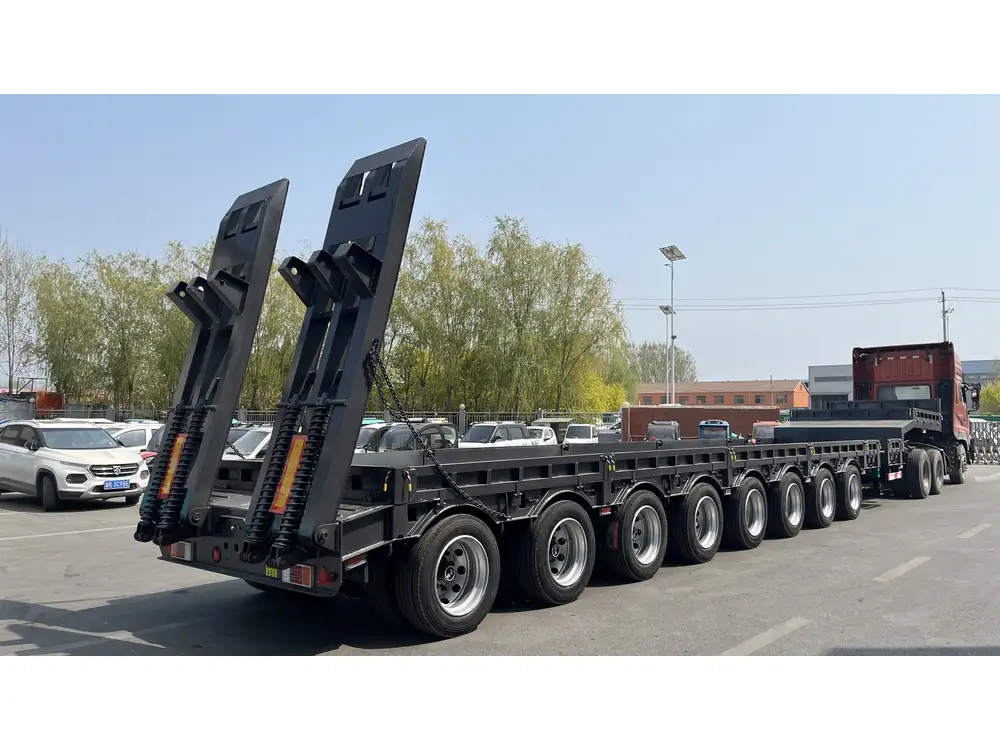
Comparative Analysis: Old Lowboy Trailers vs. Modern Designs
While modern trailer designs have introduced numerous advancements, old lowboy trailers continue to hold their ground owing to their proven reliability and specialized functionality. Here’s a comparative analysis highlighting the strengths of old lowboy trailers against contemporary alternatives.
Cost Efficiency
Old lowboy trailers often present a cost-effective solution for businesses, especially those on a budget.
- Initial Investment: Generally lower than high-tech modern trailers.
- Maintenance Costs: Simplistic design often results in lower maintenance expenses.
- Longevity: Durable construction ensures long-term usage without frequent replacements.
Durability and Reliability
The robust build of old lowboy trailers makes them highly durable and reliable under demanding conditions.
- Material Strength: Heavy-duty materials withstand harsh environments and heavy loads.
- Proven Design: Time-tested designs offer dependable performance across various applications.
- Minimal Electronic Components: Fewer electronic parts reduce the risk of system failures.
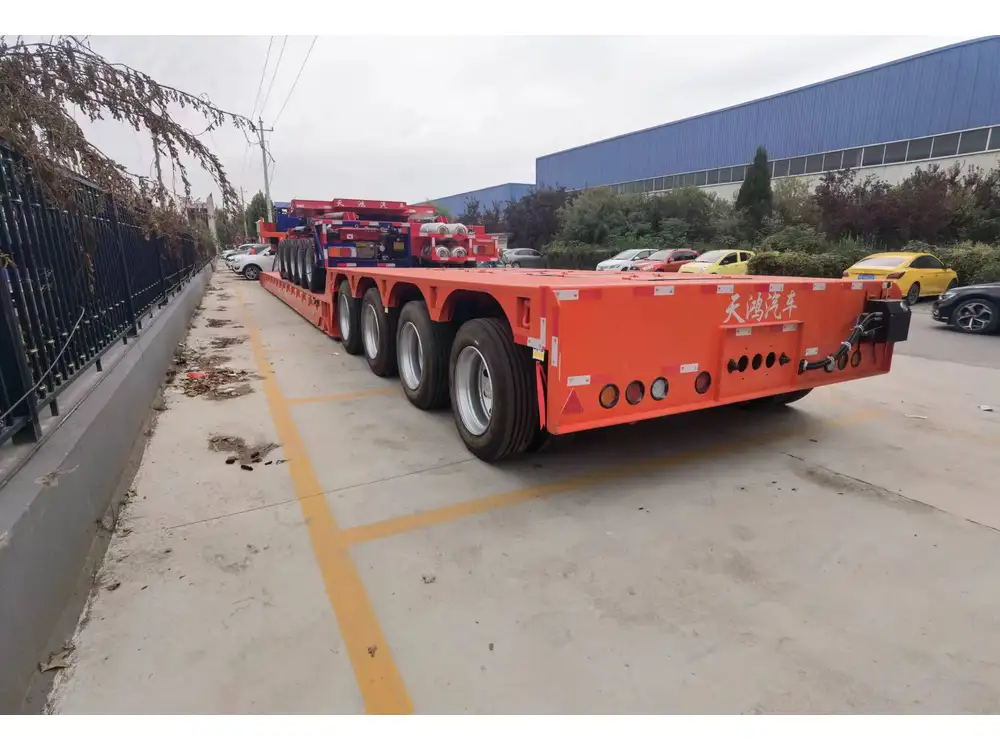
Versatility and Adaptability
Old lowboy trailers offer unmatched versatility, adaptable to a wide range of transportation needs.
- Custom Configurations: Easily customizable to fit specific load requirements.
- Multi-Industry Use: Applicable across construction, energy, aerospace, and more.
- Terrain Adaptability: Suitable for diverse terrains, including rough and uneven surfaces.
Innovations by CarMax Vehicle
At CarMax Vehicle, we honor the legacy of old lowboy trailers by integrating innovative features that enhance their performance and usability. Our commitment to excellence drives us to continually improve our trailer designs, ensuring they meet the evolving demands of modern industries.
Enhanced Safety Features
Safety remains a paramount concern in trailer design, and we have pioneered several enhancements to ensure secure transportation.
- Advanced Brake Systems: Incorporation of high-performance braking mechanisms for better control.
- Stability Enhancements: Wider tracks and improved suspension systems to prevent load sway.
- Lighting Upgrades: Enhanced LED lighting systems for better visibility during night operations.
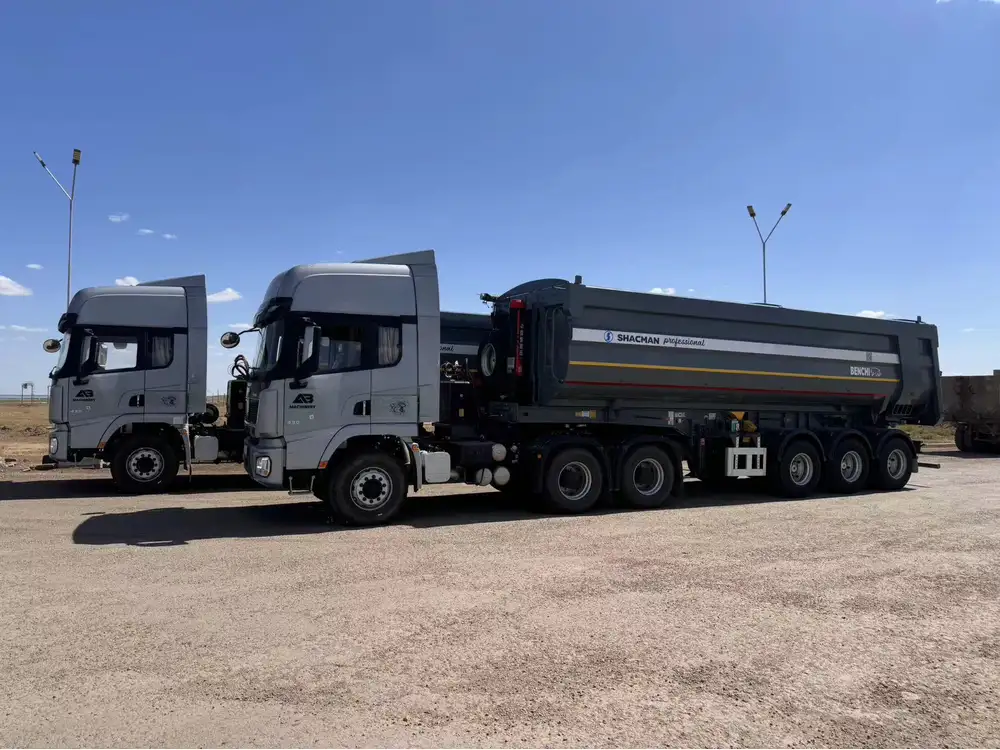
Advanced Materials and Construction
Utilizing cutting-edge materials and construction techniques, we fortify our old lowboy trailers against the rigors of heavy-duty use.
- High-Strength Steel Alloys: Increased resistance to stress and corrosion.
- Modular Frame Designs: Allow for easy modifications and upgrades without extensive overhauls.
- Lightweight Components: Reduce overall trailer weight without compromising strength, improving fuel efficiency.
Customization Options
Understanding that each client has unique needs, we offer extensive customization options to tailor our trailers to specific requirements.
- Adjustable Deck Heights: Flexible deck height settings for varying load types.
- Specialized Railing Systems: Custom railings for secure load containment.
- Integrated Loading Systems: Features like winches and hydraulics for easier loading and unloading.
Environmental Considerations
As environmental concerns grow, the transportation industry must adapt by adopting sustainable practices. Old lowboy trailers, when optimized, can contribute to greener logistics through various measures.
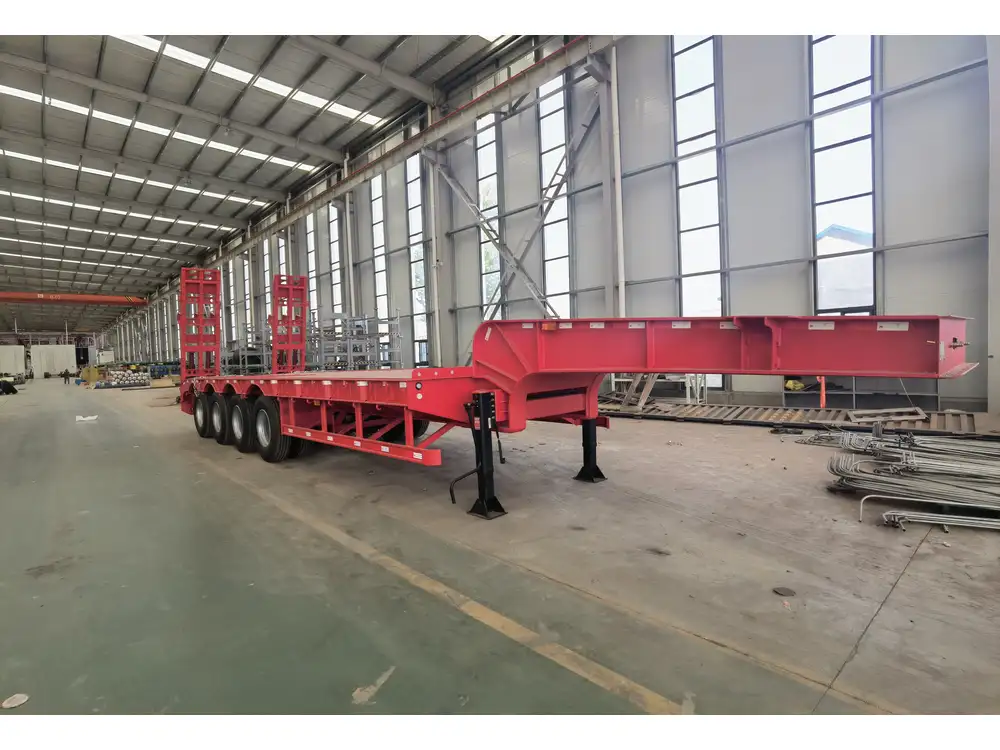
Fuel Efficiency
Optimizing trailer design can lead to significant fuel savings, reducing operational costs and environmental impact.
- Aerodynamic Enhancements: Streamlined designs to minimize air resistance.
- Lightweight Materials: Reduced trailer weight decreases fuel consumption.
- Efficient Routing: Strategic planning to minimize travel distances and idle times.
Emission Reduction Technologies
Incorporating emission-reducing technologies aligns with global efforts to combat climate change.
- Eco-Friendly Engines: Integration of engines that meet stringent emission standards.
- Hybrid Systems: Combining traditional engines with electric motors for reduced emissions.
- Emission Filters: Advanced filtration systems to capture and reduce harmful pollutants.
Sustainable Manufacturing Practices
Adopting sustainable manufacturing processes ensures that trailer production aligns with environmental stewardship.
- Recycled Materials: Utilizing recycled steel and other materials in trailer construction.
- Energy-Efficient Production: Implementing energy-saving technologies in manufacturing facilities.
- Waste Reduction: Minimizing waste through streamlined production processes and recycling initiatives.
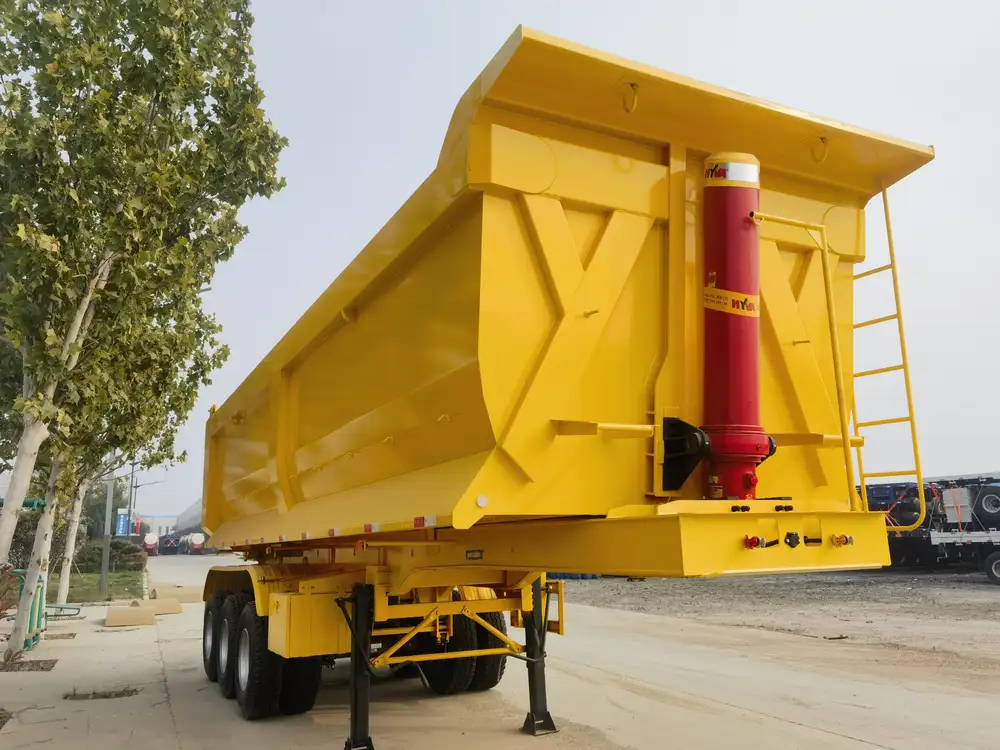
Future of Old Lowboy Trailers
The future of old lowboy trailers lies in balancing tradition with innovation. As industries evolve, these trailers must adapt to meet new challenges while retaining their core strengths.
Technological Advancements
Integrating modern technology can enhance the functionality and efficiency of old lowboy trailers.
- Telematics Systems: Real-time tracking and monitoring for better fleet management.
- Autonomous Features: Semi-autonomous systems for improved safety and reduced driver fatigue.
- Smart Maintenance: Predictive maintenance technologies to preemptively address potential issues.
Market Trends and Demand
Analyzing market trends helps anticipate the future demands of various industries, ensuring that trailer designs remain relevant.
- Increasing Demand in Renewable Energy: Growth in wind and solar energy projects requires specialized transportation solutions.
- Expansion of Infrastructure Projects: Ongoing infrastructure developments necessitate reliable heavy-duty transportation.
- Globalization of Supply Chains: Enhanced global trade increases the need for efficient and versatile transportation equipment.
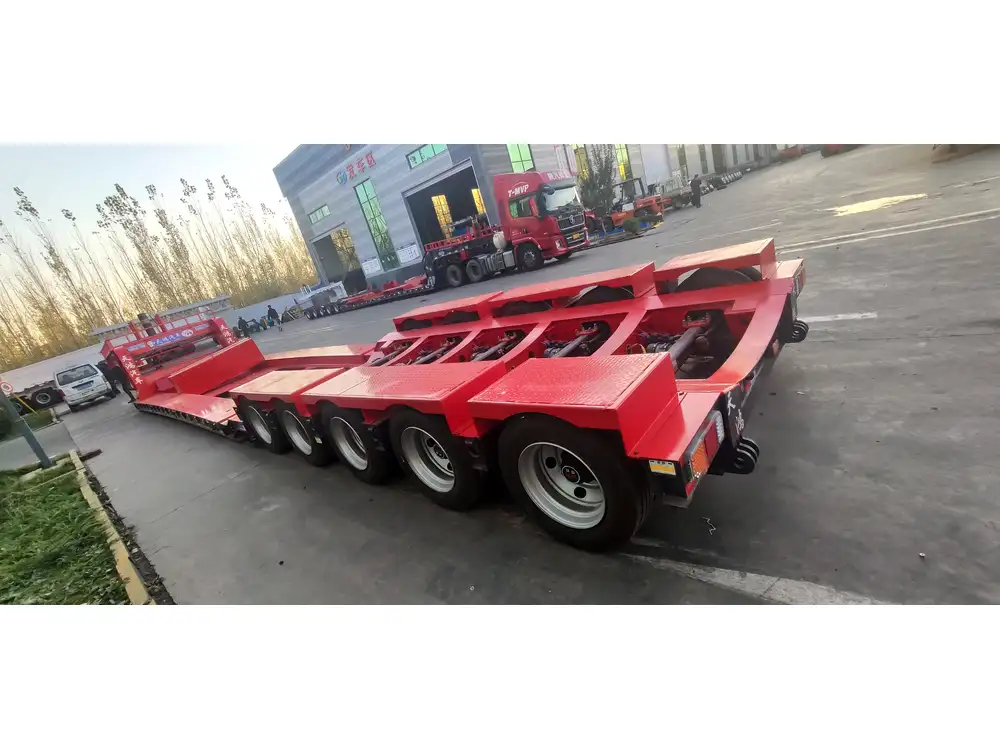
Regulatory Impacts
Adhering to evolving regulations is critical for the continued success of lowboy trailer manufacturers.
- Safety Standards: Compliance with stringent safety regulations to ensure secure transportation.
- Environmental Regulations: Meeting emission and sustainability standards to reduce environmental impact.
- International Standards: Aligning with global transportation regulations to facilitate international operations.
Conclusion
Old lowboy trailers remain a cornerstone in the realm of heavy-duty transportation, offering unparalleled versatility, durability, and cost-efficiency. At CarMax Vehicle, we honor this legacy by continuously innovating and enhancing our trailer designs to meet the ever-evolving demands of various industries. Whether it’s construction, energy, aerospace, or defense, our old lowboy trailers are engineered to deliver exceptional performance, reliability, and safety. As we look to the future, we remain committed to advancing trailer technology, ensuring that old lowboy trailers continue to play a vital role in global logistics and transportation.
Frequently Asked Questions
1. What are the primary uses of old lowboy trailers?
Old lowboy trailers are primarily used to transport heavy machinery, oversized equipment, and specialized loads that exceed the capacity of standard trailers. They are commonly utilized in industries such as construction, energy, aerospace, and defense, facilitating the movement of excavators, wind turbine components, aircraft parts, and military hardware.
2. How do old lowboy trailers differ from modern lowbed trailers?
While both old lowboy and modern lowbed trailers share the characteristic low deck height, modern lowbed trailers often incorporate advanced materials, enhanced safety features, and technological integrations such as telematics and autonomous systems. Old lowboy trailers, on the other hand, are known for their robust, time-tested designs and cost-effective maintenance, making them reliable choices for various heavy-duty applications.
3. What maintenance practices are essential for extending the lifespan of old lowboy trailers?
Essential maintenance practices include regular visual inspections for structural integrity, routine lubrication of moving parts, diligent tire maintenance, and periodic checks of brake and suspension systems. Implementing preventative maintenance strategies, such as timely replacement of worn components and ensuring proper load distribution, can significantly extend the lifespan of old lowboy trailers.
4. Can old lowboy trailers be customized to meet specific transportation needs?
Yes, old lowboy trailers can be highly customized to meet specific transportation requirements. Customization options include adjustable deck heights, specialized railing systems for load containment, integrated loading mechanisms like winches and hydraulics, and modifications to axle configurations to accommodate varying load weights and dimensions.
5. What environmental benefits do old lowboy trailers offer compared to other heavy-duty trailers?
Old lowboy trailers can offer environmental benefits through fuel-efficient designs that reduce overall fuel consumption, the use of sustainable and recycled materials in their construction, and the integration of emission-reducing technologies. Additionally, their robustness and longevity contribute to lower replacement rates, minimizing waste and resource consumption over time.



